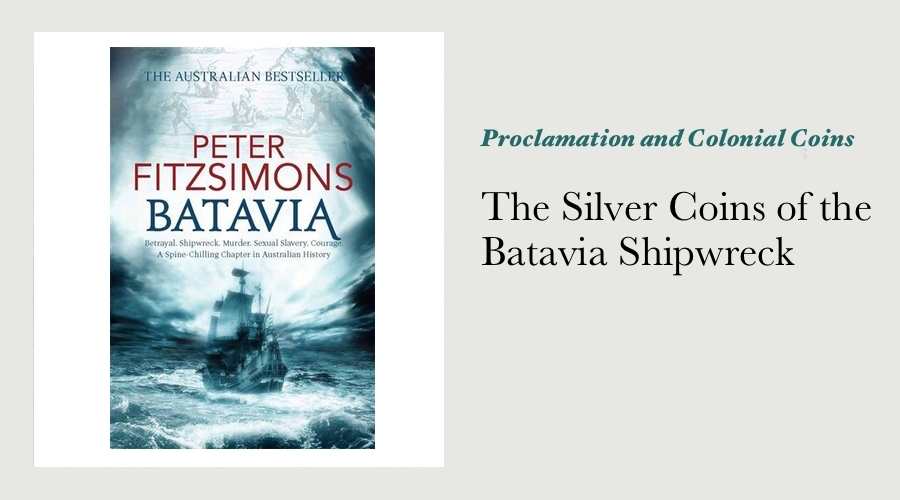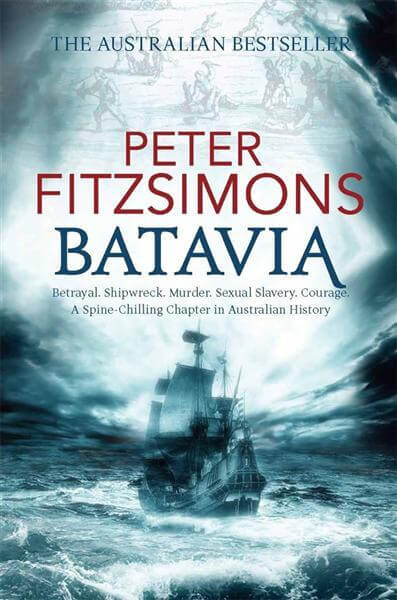The Silver Coins of the Batavia Shipwreck


If you haven't heard of the Batavia shipwreck, you truly have missed out on a story of depravity and barbarity that is known the world over. The tale of the Batavia also has consequences for the history of white settlement in Australia - throw in a good measure of controversy surrounding the discovery of the wreck in 1963, and you have a yarn with so many threads you will want to learn every aspect of this story for months to come.
The Batavia was a “jacht” of the Dutch East India Company (V.O.C.) that wrecked off the coast of Western Australia in 1629. It was built for the transport of good, personnel and specie of the Dutch East India Company (V.O.C) between the Netherlands and the Eastern Headquarters of the Company at Batavia (modern Jakarta) on the island of Java. She was a large ship by the standards of the day, and carried over 300 people including passengers, and soldiers/marines to man the guns and fight if attacked by pirates, privateers or the ships of Spain and England in wartime.
The following information is extracted from the Commonwealth Government Gazette that declared the site of the Batavia shipwreck was listed on the National Heritage List:
The Batavia is the oldest of the known Dutch East India Company wrecks on the WA coast and holds a unique place in Australian shipwrecks. The Batavia wreck sites have social and cultural significance to members of the wider Australian community due to their role in defining the archetypal Australian shipwreck story.
The places on which the events unfolded during and after the wreck of the ship are associated with a nationally important story which graphically illustrates the dangers inherent in sea travel to Australia. As a result of their being marooned on the mainland, Wouter Loos and Jan Pelgrom de Bye are regarded as the first known European residents of the Australian continent. The two ruined 'huts' on West Wallabi Island are the oldest structure built by Europeans in Australia.
The Batavia provides one of the best Australian examples of the characteristics of a shipwreck site, for the following reasons:
- The wreck occurred after a long and arduous voyage where considerable hardship had already been experienced by the passengers and crew.
- The vessel was wrecked at night on a coral reef that provided little by way of shelter and sustenance to the survivors,
- The wreck contained what was for its time vast wealth in the form of silver coins and jewels of great value.
- The survivors only hope of assistance was from an isolated Dutch outpost 900 nautical miles away, and to fetch this assistance required a superb feat of seamanship in open boats under considerable hardship. The wreck of the Batavia is unique in the annals of Australian shipwrecks because of the consequential events of the Corneliusz-led mutiny and murders after the departure of Pelsaert to fetch assistance.
The Vessel - Batavia
| Owner | V.O.C. |
| Rig Type | Jacht |
| Tonnage | 650 tons |
| Length | 56.60m |
| Breadth / Beam | 10.50m |
| Depth / Draft | 5.10m |
The Voyage - Batavia
| Country of Origin | Netherlands | Intended Destination | Batavia (Indonesia) |
| Departure Port | Texel | Wreck Location | Morning Reef; Beacon Island; Houtman Abrolhos |
| Departure Date | October 26th 1628 | Wreck Date | June 4th 1629 |
| Commanding Officer | Francisco Pelsaert | Description of Cargo | Trade goods and supplies, building blocks for portico, specie |
| Crew on Board | 341 | Crew Survived Wreck and Then Murdered | 125 |
| Crew Dead Swimming to Shore | 40 | Total Crew Survived | 116 |
| Crew Survived Wreck | 301 |
Batavia Shipwreck Identification
| Location Date | June 4th 1963 |
| Primary Finder | Hugh Edwards |
| Finders | Dave Johnson, Max & Graham Cramer, Greg Allen |
Batavia Shipwreck Coin Statistics
| Known On Board | Value = 259,788 guilders |
| Not Recovered From Wreck | 2 chests |
| Recovered From Wreck Site | 9,129 |
| Held by WA Maritime Museum | 7,687 |
| Legally Held In Private Hands | 1,442 (15.79%) |
The coins recovered from the Batavia were mainly silver Rijksdaalders of the United Netherlands and the Spanish Netherlands and a wide variety of Talers from the German States, cities and bishoprics of the Holy Roman Empire under the authority of the emperor who was elected from the Arch Dukes of Austria.
Over 90% are silver crown-sized pieces, with a few of the Half Thaler and Half Daalder denominations.
Unfortunately, more than 80% of the coins recovered from the wreck of the Batavia are badly corroded, and in many cases unidentifiable.
They all remain however a tangible link to one of the world’s most famous shipwrecks.